My tomato plants are on deck, waiting to be planted, because it hasn’t warmed up to their liking yet. This last week’s nights still dipped into the 30s in my yard, we’ve got more rain this weekend, and a shift to consistently dry and warmer weather isn’t in the forecast.
Which gives me time to choose my planting sites. As I think back, most of my best tomato plants have grown where no tomatoes had grown before: they were growing in new dirt. So this year I’m going to plant many of my tomatoes in new dirt to see if I can’t get many plants that are deep green and bubbling with fruit.
Examples of tomatoes in new dirt
I remember a Sungold cherry tomato plant that I placed between some large rocks. It grew so massive that it was like entering a jungle to pick fruit from the interior.
And I remember a Blue Cream Berries plant (a Wild Boar variety) that I placed at the dripline of a large Valencia orange tree. The plant grew out of the top of its cage, climbed into the canopy of the orange tree, and dripped blue and yellow cherry tomatoes for us endlessly.
So I went searching for photos of those plants but I couldn’t find any!
What I could find were photos of the incremental degradation of my tomato plants when I put them in the same old dirt summer after summer, even after adding ample nutritious compost.
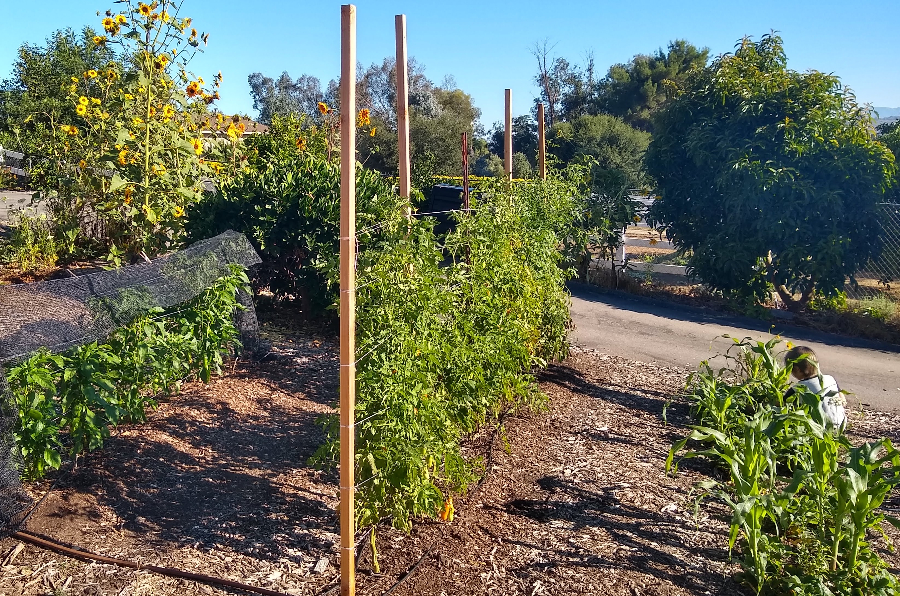
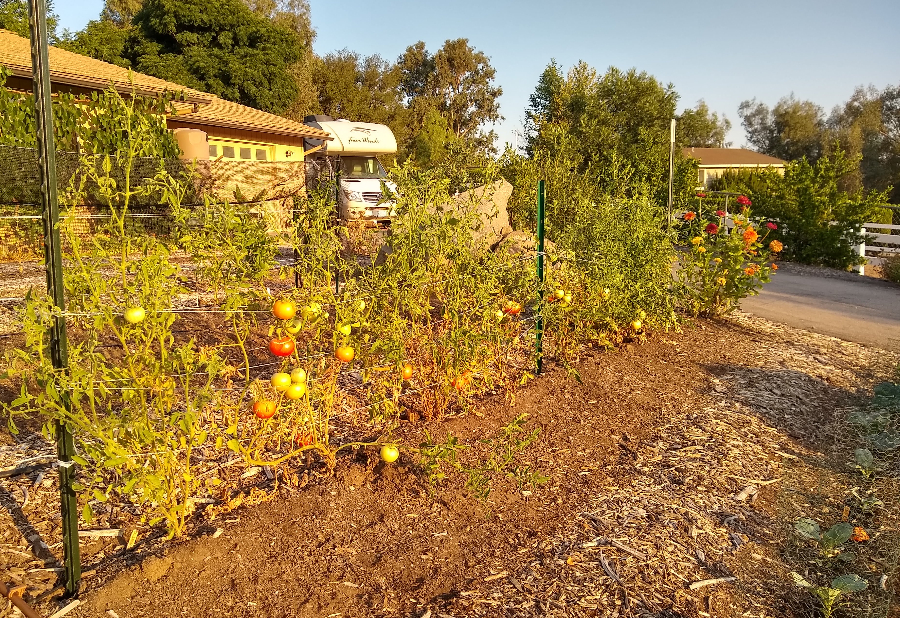
Why did this happen? Why do tomatoes love new dirt?
Why tomatoes love new dirt
It might be that the populations of tomato pests and pathogens are low or non-existent in new dirt. It might be that the nutrients that tomatoes need are abundant in new dirt.
What to do
1. If you have garden space, rotate and rest. Don’t grow tomatoes in the same spots summer after summer. Rather, rotate in crops that are very different from tomatoes.
I’ve found that corn, sunflowers, wheat, and brassicas (cabbage, cauliflower, broccoli, mustard, kale) rotate well with tomatoes, insofar as a spot where a tomato pest or disease is appearing, those crops are unaffected. In contrast, I’ve found that peppers, eggplants, and potatoes do not rotate well with tomatoes, as they share many pests and diseases.
The more time between rotating in a tomato crop, the better.
(More on rotations for tomatoes from the University of California here.)
2. If you are limited on space, be sure to keep fertility high through adding compost and appropriate fertilizers, and do your best to identify any pests or pathogens that are holding your plants back so that you can select the most suitable varieties.
For me, it has been a build up of root-knot nematodes that have prevented some varieties of tomatoes from performing well in my “old dirt” spots. However, varieties that are resistant to RKN still do fine in those spots.
A good plant tag or seed packet should list the disease resistance of a variety.
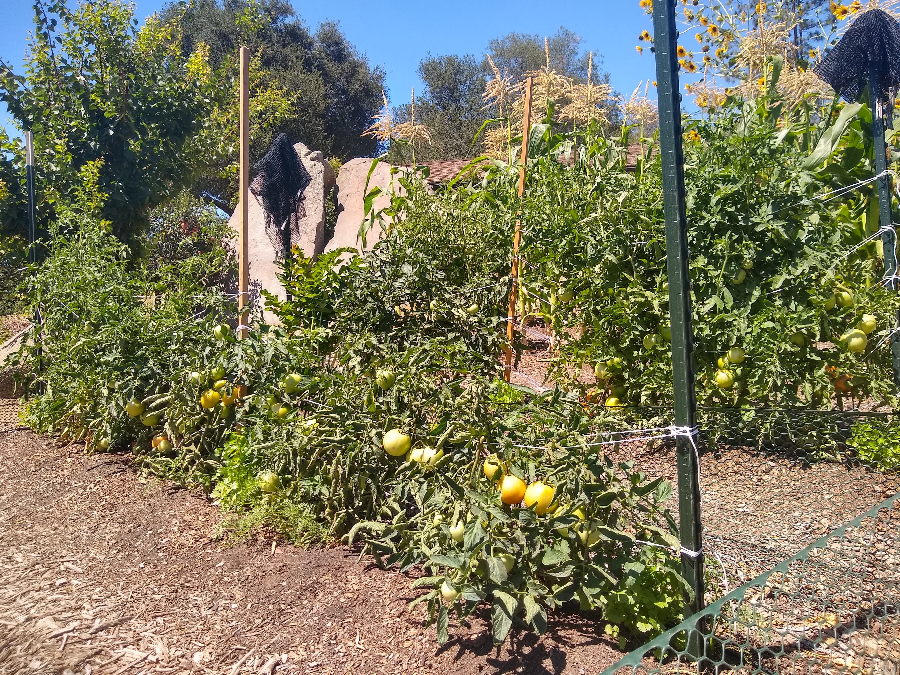
3. If you are growing in containers, you don’t need to use a totally new mix each year but you probably should change out some of it. My old neighbor used to grow excellent tomatoes year after year in the same half-wine barrel while just adding about half new mix.
I would incorporate at least some new mix each year (or rotate crops/containers), and be sure to keep the fertility high with compost or fertilizers. And if you don’t like your results, try using all new mix or a different mix. All potting soils are not of equal quality.
(See this post where I compare four mixes.)
New dirt is welcomed by all crops. I’ve grown awesome corn and pumpkins and lettuce and watermelons in new dirt too. But in my experience, tomatoes (and peppers) respond most positively to growing where they haven’t grown before. So in the next couple weeks I’ll definitely be planting some of my tomatoes in dirt that’s never seen a tomato root.
And I might try this hybrid approach that I saw last summer, where a gardener put tomato plants in new dirt (not potting mix) into five-gallon containers and then sunk the containers in the ground wherever convenient. From the looks of the plants, it was obviously working.
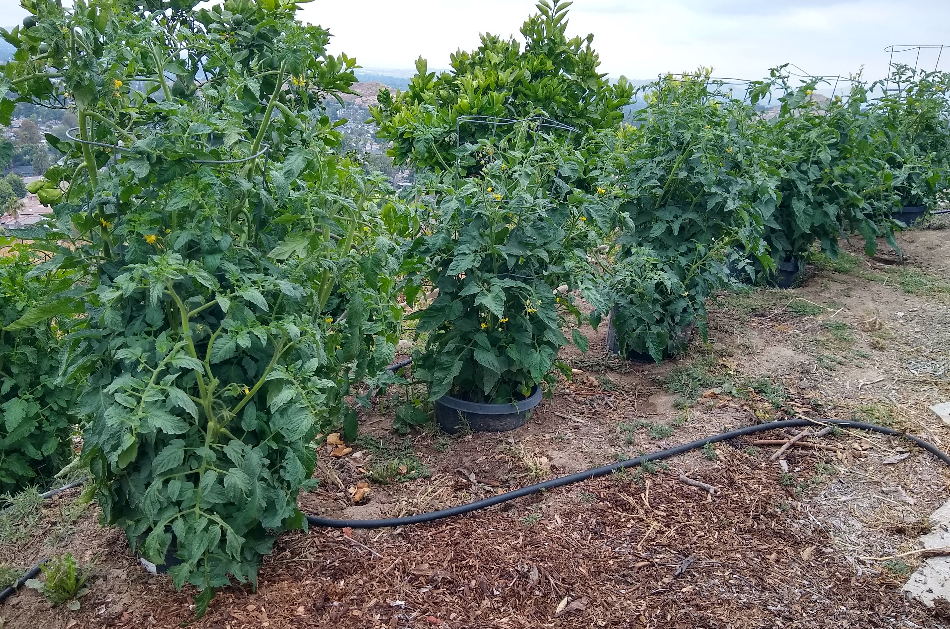
I support your food garden, and I’m grateful when you support me.
All of my Yard Posts are listed here.

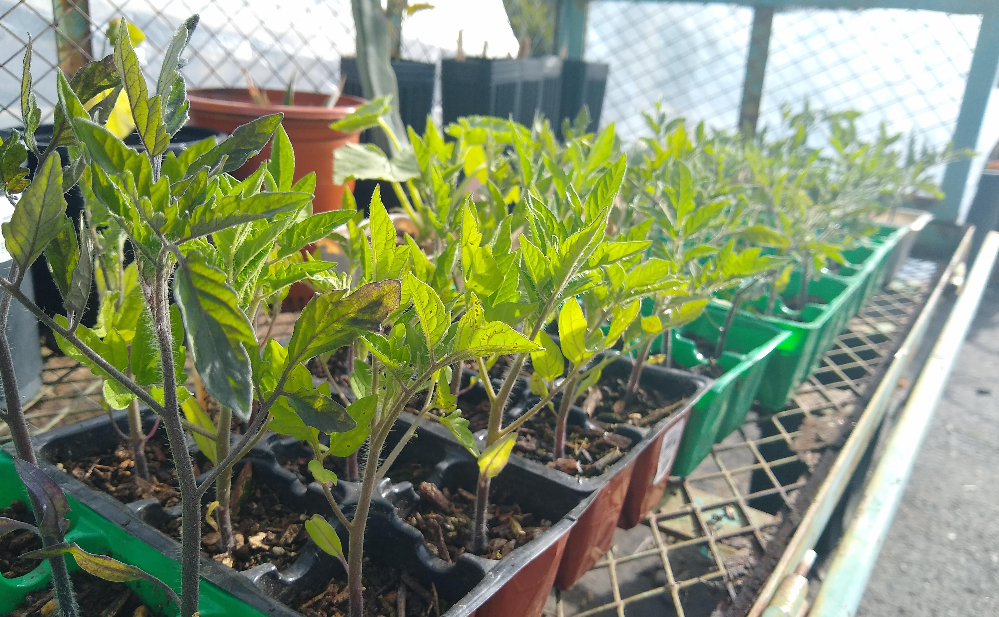


Hey Greg,
Last year I planted both my tomatoes and peppers in what you call ‘new dirt’. Both had blossom end rot; and the tomatoes being the worst. I’ve been growing tomatoes for ever it seems like and have never had this problem before.
What can I do this year to prevent blossom end rot?
Thanks Greg,
Joe
Hi Joe,
Bummer! I would first think about the varieties you grew and the anomalous weather of spring and early summer last year (cold). But there are other factors involved too. See this post for more on blossom end rot on tomatoes: https://gregalder.com/yardposts/succeeding-at-tomatoes/
Hi Greg, I found that for me the only way to succeed with tomatoes and my soils root knot nematodes is to graft onto resistant rootstock. I have used Estamino for the last couple of years and going to try Dro141TX this year from Johnny’s Seeds. It is a pain to do the grafting and I am not very good at it but it does seem to work. Thanks
Thanks, Tom. I plan to try grafting some tomatoes this year for the first time. It does seem like a pain, but it also seems like it can pay dividends. I’d love to hear any tips if you have them.
Hi Greg – I have mostly grown my tomatoes in raised beds and added tons of new compost, soil, ground eggshells, fertilizer etc. I haven’t had any issues so do I just keep doing it until it doesn’t work?
In the example of the 5-gallon pots in ground, by new dirt – what do you mean? It’s soil the guy had delivered, not bagged potting soil? and how do the roots of the tomato continue to grow? Thanks!
Hi Mariangela,
If it ain’t broke, don’t fix it. Keep doing what you’re doing until it doesn’t work, that’s what I say.
Yes, the guy has filled the 5-gal. pots with real dirt from his property, not potting soil. That’s what he told me. The pots have bottoms on them, but there are holes in the bottom so I suppose the roots can grow through those holes into the dirt below if they want.
It makes total sense that plants will have extracted what they need from the soil within the reach of their greedy roots, and attracted every pest above and below ground, of which many have likely laid eggs. I’m learning that broccoli is beloved by every organism on the planet and birds even want a share of the broccoli seed pods I’ve been growing. I scare them off and say, “Eat the weed seeds I left for you!” because I grow weeds, too. I employ a lot of earthworms when adding their habitat (vermicompost) and a quick scan indicates that they eat nematodes. I have so many worms in my worm ranch it isn’t even funny.
Hi Greg, this is off topic, but have you ever grown Hardy Kiwi or fuzzy Kiwi? I’m worried about planting one because of the Santa Ana winds. Thank you kindly!
Hi Annaleise,
I have not grown kiwis, but I have seen some in various parts of California and have kept some notes on how they do and how the plants are cared for. I haven’t heard anyone mention Santa Ana winds being a huge problem for them although Santa Anas aren’t good for any plant that I can think of!
Hi Greg,
I am a subscriber to your Yard Posts which I enjoy reading. Is the subscription fee I pay tax deductible as a charitable donation? I think you’d have to be a nonprofit organization if it were. Keep up the good work! Thanks.
Hi Susan,
It’s that time of year! Sorry, I haven’t set up a non-profit organization to make donations tax deductible. Thank you very much for your kind words and support anyway.